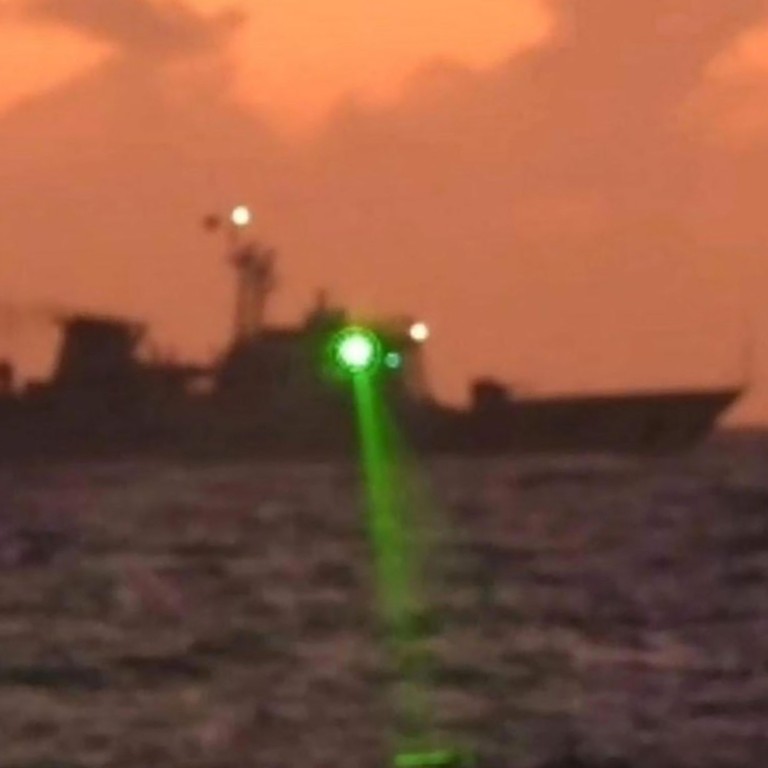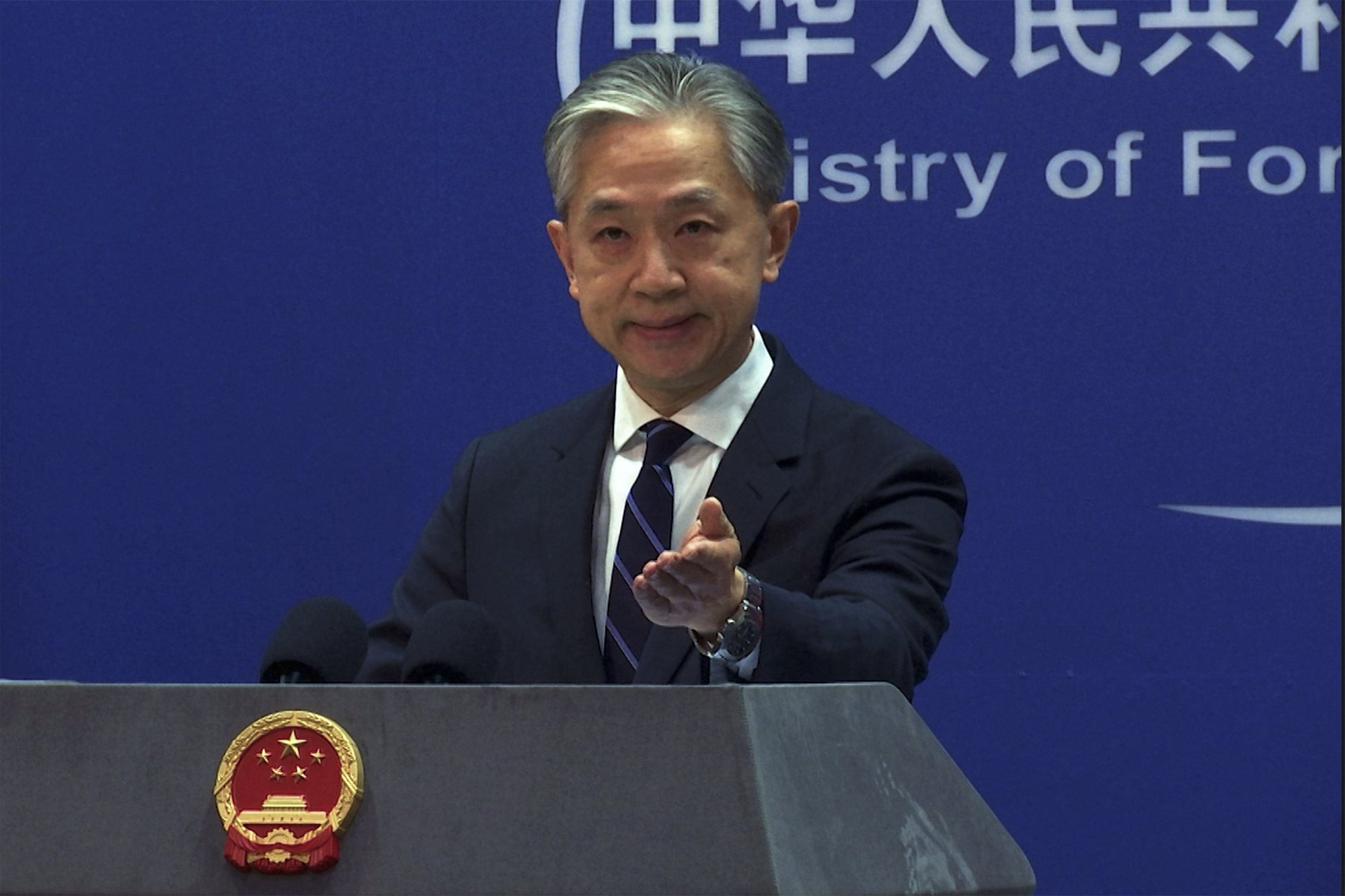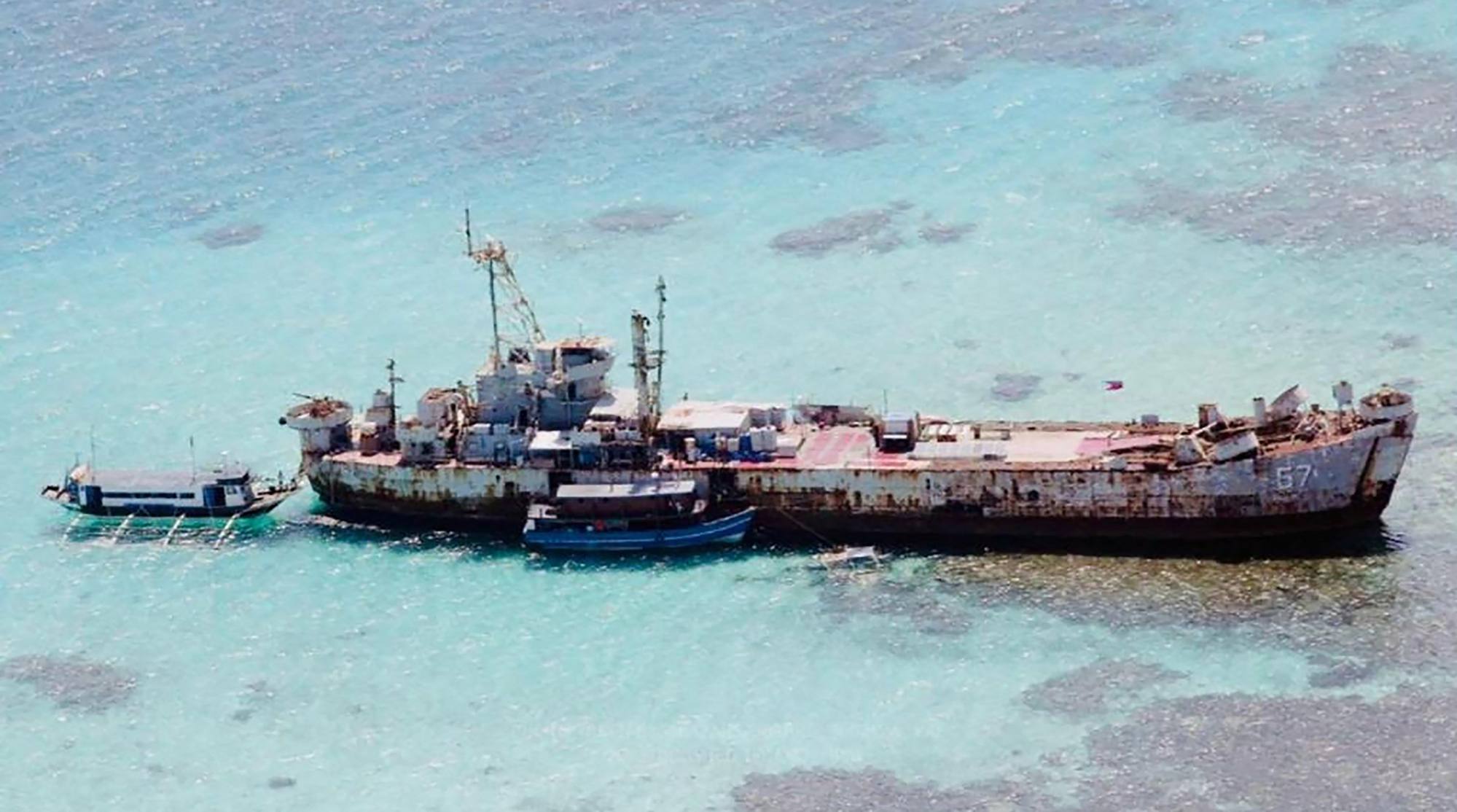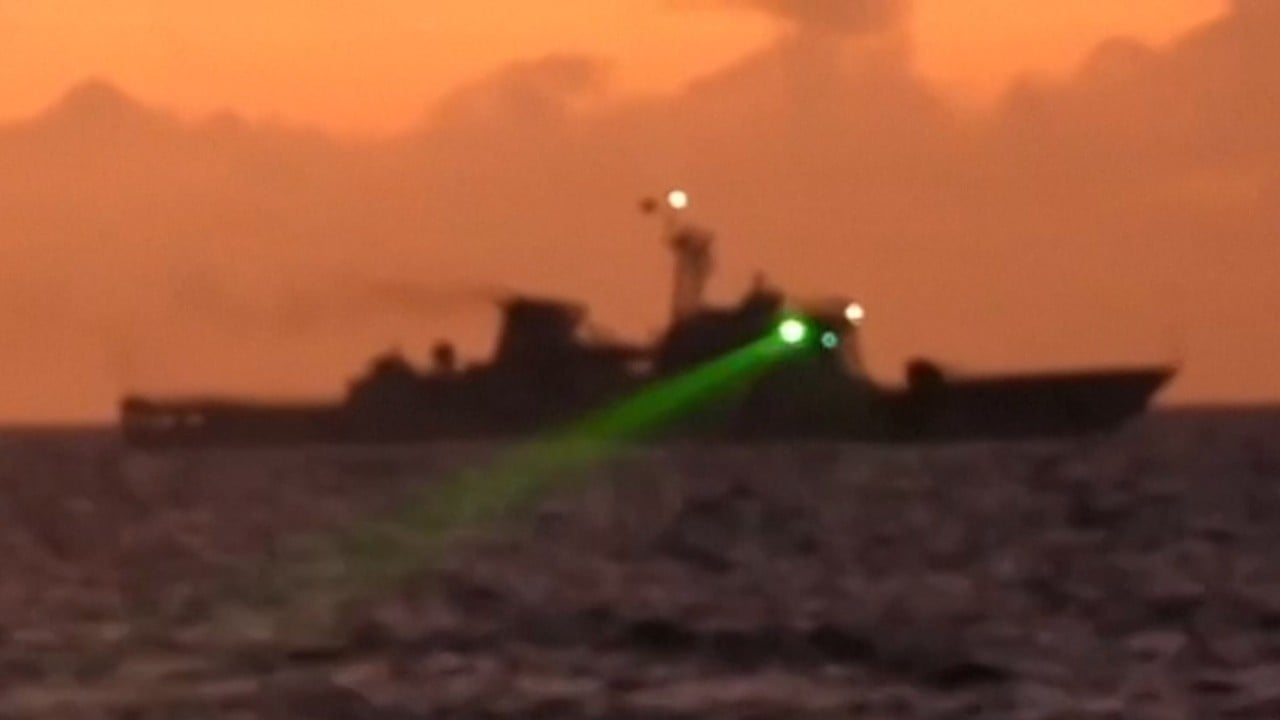
Philippines files protest over Chinese coastguard’s use of laser against its boat
- Manila says Chinese coastguard tried to block resupply of Filipino troops stationed at Second Thomas Shoal in the Spratly Islands on February 6
- Incident near the shoal was an ‘intrusion without permission’ by the Philippine side, Chinese foreign ministry says
The Philippine Department of Foreign Affairs said the protest was filed to the Chinese embassy in Manila. It described the Chinese coastguard’s action as a “threat to Philippine sovereignty and security as a state”.
“These acts of aggression by China are disturbing and disappointing as it closely follows the state visit to China of [Philippine] President Ferdinand R. Marcos Jr in early January during which he and Chinese President Xi Jinping agreed to manage maritime differences through diplomacy and dialogue,” foreign affairs spokeswoman Teresita Daza said in a statement.
The Philippine protest came after Chinese foreign ministry spokesman Wang Wenbin said on Monday that the incident on February 6 near the Second Thomas Shoal was an “intrusion without permission” by the Philippine coastguard.
The Chinese vessel had been “safeguarding China’s sovereignty and the maritime order”, based on domestic and international law. “The operations on site were professional and with restraint,” he said.

The laser incident is the most recent sign of growing China-US rivalry in the region, with the US State Department on Tuesday backing Manila and describing China’s action as “provocative and unsafe”.
US State Department spokesman Ned Price said the US “stands with our Philippine allies in upholding the rules-based international maritime order”, adding that an armed attack on the Philippines would involve the US-Philippines mutual defence treaty.
“China directly threatens regional peace and stability, infringes upon freedom of navigation in the South China Sea as guaranteed under international law, and undermines the rules-based international order,” Price said.
While the latest incident has cast a shadow on Philippine-Chinese relations, Wang said the two sides were “keeping communication through diplomatic channels on this issue”.
He added that Beijing hoped Manila would “avoid any action that may lead to the expansion of the dispute and complication of the situation”.
China-Philippines deals include new channels to resolve maritime disputes
According to a Philippine coastguard account of the incident released on Monday, the Chinese ship – hull numbered 5205 – tried to block the BRP Malapascua from reaching the shoal, where it was going to deliver food and supplies to Filipino troops stationed there.
“The PCG condemns any actions that harm and jeopardise the safety of everyone, regardless of nationality,” Admiral Artemio Abu, the Philippine Coast Guard commandant, said in the statement.
The Second Thomas Shoal is part of the contested Spratly Islands. The submerged coral atoll is claimed by Beijing, Taipei, Manila and Hanoi, and also called Renai Shoal in Chinese, Ayungin Shoal in Tagalog and Bãi Cỏ Mây in Vietnamese.
In 1999, the Philippine Navy intentionally scuttled a retired landing ship, the BRP Sierra Madre, on the shoal, and has since maintained a presence of marine troops on the vessel to exercise its claim in the area.
As a result, the Chinese coastguard frequently patrols the nearby waters, trying to prevent the resupply of the Filipino marines on board, which occasionally leads to reports of clashes.
The last similar incident was in November 2021, in which the Chinese coastguard reportedly harassed the resupply by two Philippine civilian boats.
Since the February 6 incident, Philippine media has reported another Chinese coastguard vessel, numbered 5304, has patrolled the Second Thomas Shoal, tailing the Philippine Navy ship BRP Andrés Bonifacio on Wednesday.
It was also reported that two Chinese coastguard vessels had a close encounter with the Bonifacio on February 4 near Mischief Reef and Reed Bank, two other disputed Spratly reefs.

The conflict reflected the long-standing contest between China and the Philippines over the sovereignty and jurisdiction of the islands in the South China Sea, said Ma Jianying, director of the Centre for Maritime Security Studies at Shandong Normal University.
Japan, Philippines sign disaster relief deal
“From China’s point of view, they own the sovereignty and jurisdiction of the Spratly Islands and the nearby waters. So if Filipino fishing or military vessels enter [nearby] waters, China would definitely warn or deter that from happening,” Ma said.
“The United States would surely stand up to support the Philippines,” he said, adding that the gesture could “hype” China’s threat in the area while strengthening mutual trust between the US and the Philippines.
The Philippines also needed the support of the US when it came to competing with China in the South China Sea, he said.
Additional reporting by Hayley Wong



